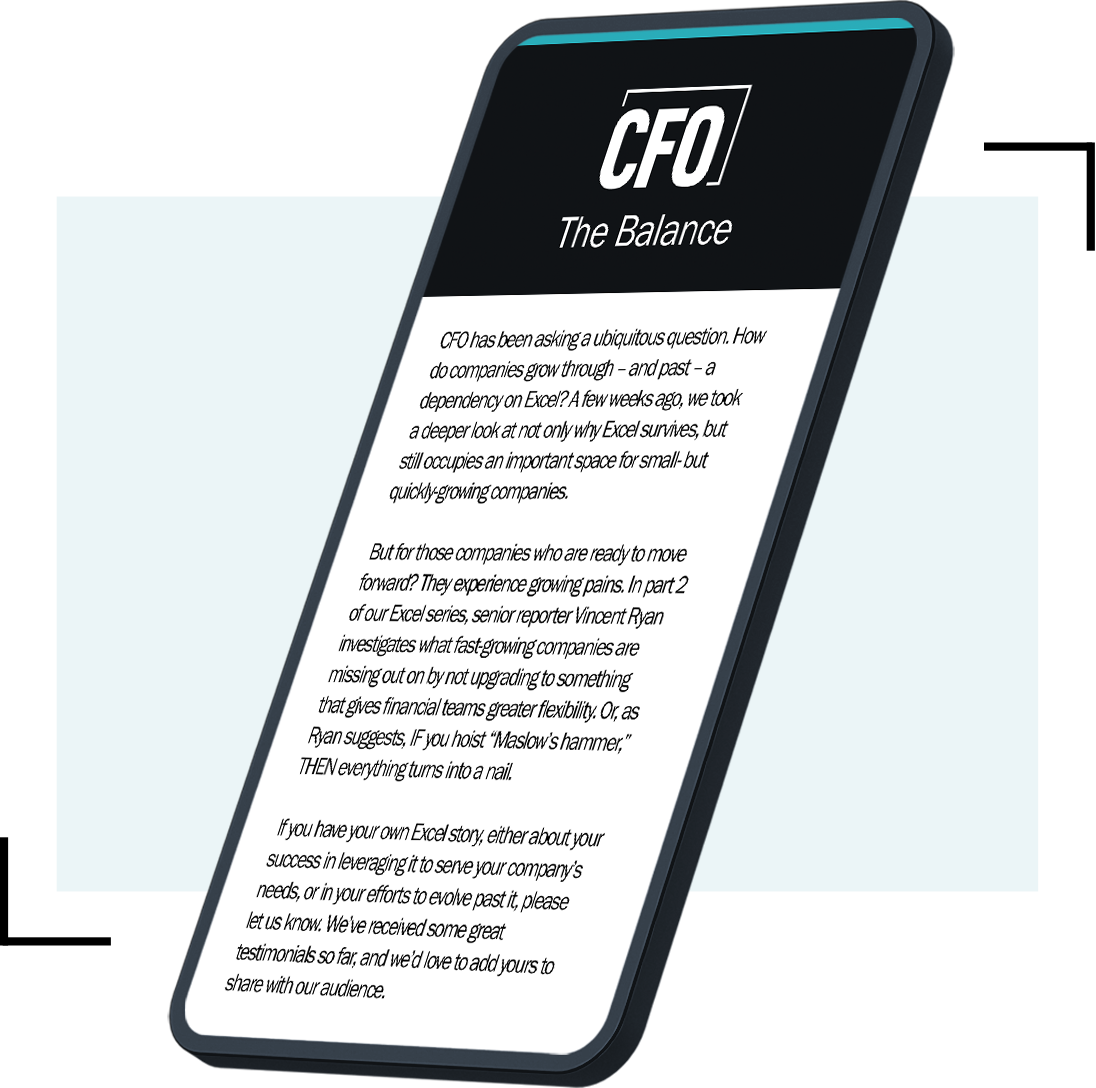Significant headwinds continue to challenge small business CFOs and their organizations. During the best of times, small- to medium-sized enterprises (SMEs) operate within tight budgets and often struggle to balance cash flows. Now, supply chain issues, inflationary pressures, and talent gaps exacerbated by the Great Resignation make times even tougher.
But challenge and opportunity go hand-in-hand. As CFOs, we are known for our ability to analyze complex business issues, solve problems, think strategically, and deliver results. Leveraging these skills and our “big picture” view, we can support cross-functional partners in their decision-making.
Being resilient means being able to recover from or adjust quickly to difficulty or change. During the first COVID-19 wave, most organizations were resilient, quickly transitioning their teams to fully remote. Since then, the lingering pandemic and deteriorating economic conditions have taken their toll. Even so, some SMEs have been able to remain viable and even thrive, despite the headwinds.
While there is no standard formula, truly resilient companies have exhibited visionary leadership, business focus, and people-centric cultures. And according to a new report from the Institute of Management Accountants (IMA), “Thriving Amidst Change: A Guide to Small Business Resilience,” these elements of resiliency are key to any organization’s success.
Have a Vision?
What are your company’s vision and strategic goals? Are they clearly articulated? And are they shared throughout the organization, from the CEO to the shop floor?
Having “grown-up” professionally in a large, public company, I experienced strategic planning and annual budgeting as part of the ongoing routine. At its best, the processes led to breakthrough ideas on how to better meet consumer needs and more effectively manage the business, thereby creating economic value. Some ideas focused on a specific business line, such as developing new products. Other ideas were enterprise-wide, defining ambitious sustainability goals, or creating a company-wide shared services center encompassing finance, human resources, supply chain, and other services.
While there is no standard formula, truly resilient companies have exhibited visionary leadership, business focus, and people-centric cultures.
Now that I’m CFO for a smaller business, I’ve realized many SMEs don’t have a clearly articulated vision, at least not one understood and shared throughout their organizations.
Whether strategic planning is a well-established process or a new endeavor, now is a great time to engage cross-functional partners in deep reflection and reimagination of the business. Facilitate a work session to better understand the company’s strengths and areas of vulnerability, conduct research to better understand industry trends and market needs, and determine your overall purpose.
Business Focus
Beyond providing visionary leadership, highly resilient companies should revisit every aspect of their business, including the following six key areas:
- Customer relationships. You need to know your customers to meet their needs and pivot as their needs change. But building meaningful relationships based on trust has become more difficult amid the Great Resignation (whether turnover has impacted you, your customer, or both). Consider prioritizing customers and assigning a relationship manager to each one deemed high priority.
- Product offerings. Analyze business lines and specific products to determine profitability, identifying which to promote and which to prune. Leverage cost analysis and benchmarking to ensure products are properly priced. And conduct research to determine what the market is looking for relative to your current offering.
- Vendor relationships. Have you been with your current banking partner, liability insurance broker, employee benefits consultant, 401(k) plan administrator, external CPA firm, or other service providers for an extended time? If so, do they still value your business or take you for granted? Consider evaluating alternatives and initiating a formal request-for-proposal process for all key services.
- Organizational structure. Is your organization “fit for purpose” based on the current vision and strategic plan? When making a major shift in strategy, consider creating a new division reporting directly to the CEO, signifying the importance of the change.
- Performance reporting. To make informed decisions related to inventory, business expenses, hiring, capital investments, and other areas, management needs clear insight into financial performance. Even if your reporting is timely and accurate, are you providing the right insights and analysis to run the business? For example, if you’ve recently expanded globally, are you providing analysis by country or region? Or are you still setting budgets and presenting results as a total group?
- Talent management. Identify gaps, provide appropriate training, and hire new resources, if necessary. And use the Great Resignation to reevaluate staffing. Maybe, for example, there are advantages to outsourcing the IT help desk and related activities versus backfilling the recently departed IT manager.
Although it's cliché to say people are our greatest resource, it’s also the truth. That said, how would you describe your current culture? Is it people-centric? How has it changed, good or bad, over the last few years? Reconnect with employees, whether they are back in the office, hybrid, or still fully remote. Offering a “family” environment can be a competitive advantage for smaller companies. In addition, foster a learning culture, encouraging your team to share new ideas, learn new skills, and gain new experiences, while maintaining appropriate accountability.
![]()









